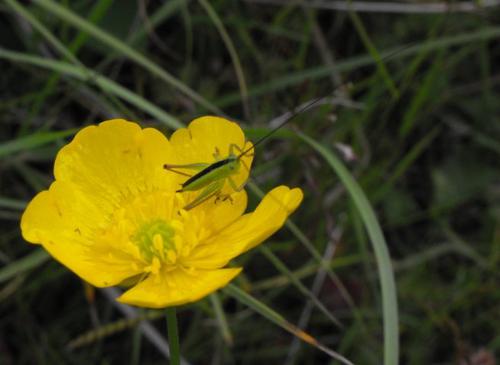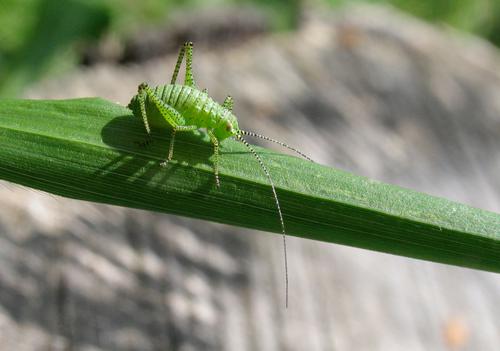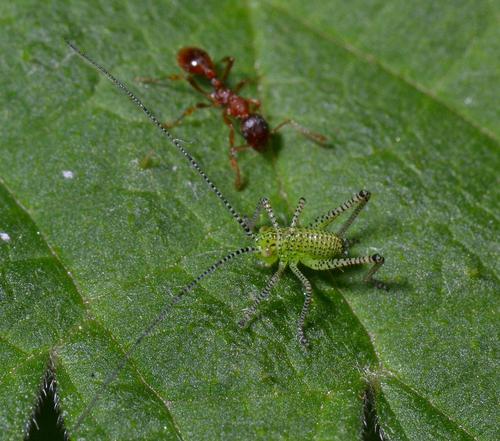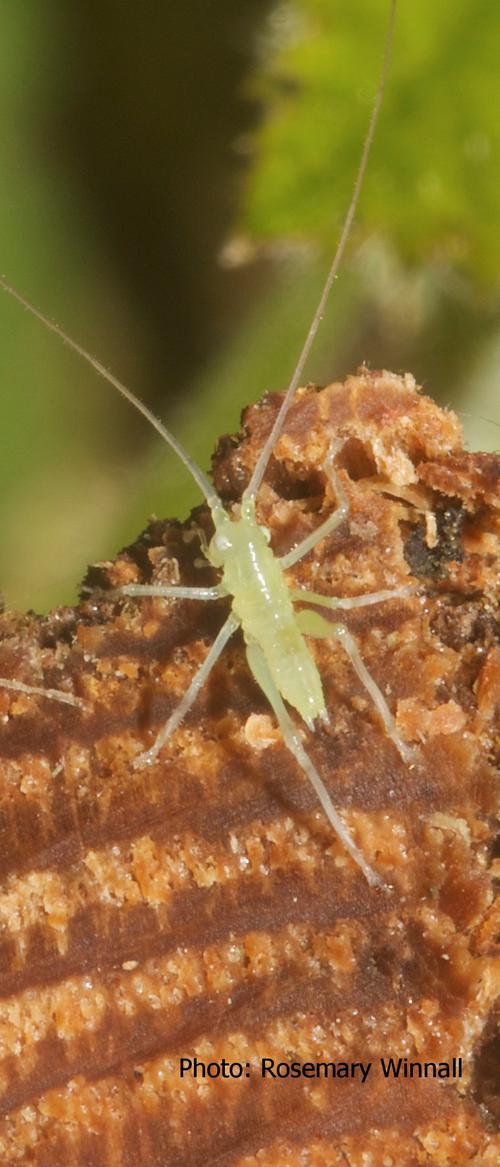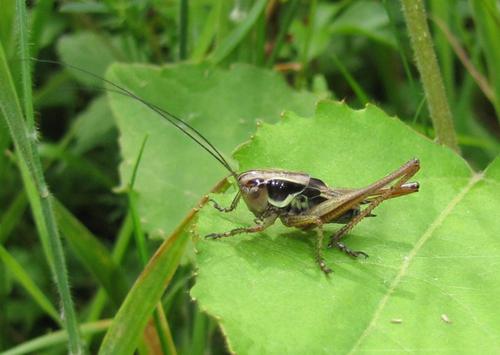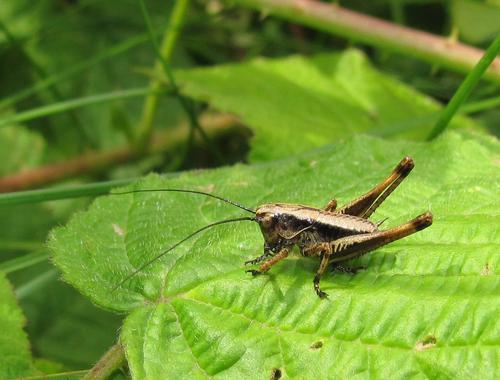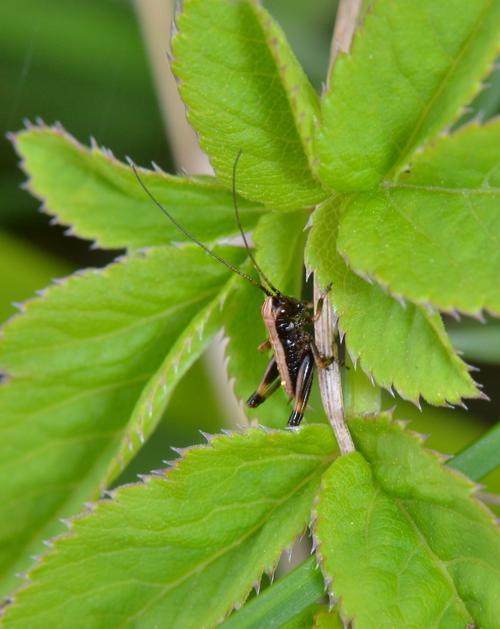Mapping Worcestershire’s Orthoptera
Gary Farmer
To add value and interest to the proposed Orthoptera atlas we would like to gather information on behaviour of species within this group in Worcestershire. Note that besides grasshoppers and crickets this group contains earwigs and cockroaches. There are many questions to be answered including the following:
Has anyone seen a cockroach lately?
We have no native cockroach species in Worcestershire but we have records for four introduced species. The number of records for each species is however very small (one each for three species, four from the 1940s for the other) and we have no records for the 21st century. Surely we have cockroaches lurking somewhere in the county; in basements, under fridges, in warehouses or shops or have we really eradicated cockroaches from Worcestershire?
Is the Common Green Grasshopper still common in Worcestershire?
Common Green Grasshopper Ommocestus viridulus appears to be losing ground in the county. Data held at WBRC suggest that this species was once far more common than it is today; but is this the true picture or is it the result of recorder fatigue?
Certainly available information suggests the loss of this species from many areas; have we lost the flower-rich grassland habitat favoured by Common Green Grasshoppers from these areas? This is often the first species to sing, as early as June some years and it has the classic grasshopper-rattle (the one that sounds like the Grasshopper Warbler). So even if you’ve sent in records from an area in the past send any in from this year to see if the Common Green Grasshopper is still living up to its name.
When do bush-cricket nymphs first appear in the year?
Most years bush-crickets start to emerge from eggs sometime in May and, unlike their cousins the grasshoppers, they can be identified to species from the earliest stages. Grasshoppers need to pass through one or two moults before they show the characteristic patterns that separate species. Bush-crickets however are perfect adults in miniature with the characteristics required for field identification. The exception is the coneheads; Long-winged and Short-winged are both instantly recognisable as coneheads but the nymphs cannot be indentified to species level. Habitat can be used to aid identification of Short-winged Conehead but not so Long-winged Conehead. Up until a few years ago a conehead in a Worcestershire wetland would have been Short-winged but the Long-winged Conehead has now invaded this habitat since reaching the county at the end of the 20th century. The latter species has actually invaded all grassland habitats in most of the county whereas the Short-winged Conehead remains restricted to wetlands with abundant rushes. So a conehead nymph on a buttercup or dandelion outside of a wetland in Worcestershire will probably be Long-winged Conehead (at this point in time) (Fig.1.).
Speckled Bush-cricket nymphs are stumpy and green, covered in tiny black spots. (Figs. 2. & 3.)
Oak Bush-cricket nymphs are plain, pale green Fig. 4.(we don’t have Southern Oak Bushcricket yet).
Roesel’s Bush-cricket nymphs have the distinctive pale U shape on the sides of their pronotum and pale patches on the sides of their thorax (Fig.5.).
Dark Bush-cricket nymphs look a little like Wolf Spiders (and a lot like adult Dark Bush-crickets) Figs 6. & 7.
This year may well see a late emergence due to the cold, snowy start to the spring so get looking and record dates and locations for the nymphs.
Other questions
Do certain colour forms occur in certain parts of the county?
Do long-winged forms of Meadow Grasshopper occur at the same sites every year or is it temperature dependant?
What do our Orthoptera choose as lecking sites: cow pats, bonfire sites, large stones, large leaves etc?
Photo identification
Adult Orthoptera can be identified reliably from all but the most blurred photos. So if you have images of Grasshoppers and Crickets in the county with a date and location I’d be happy to identify them or confirm identification. Send images to vc37hopper@gmx.com together with information on your record (date, place, grid reference, and your contact details) and I’ll let you know what you’ve photographed (if it is an Orthopteran) and add the records to the WBRC database.
Worcestershire Orthoptera web site
This spring I published a new web site dedicated to the Orthoptera and allied insects of Worcestershire. It has up-to-date distribution maps, identification tips and a full annotated list of species recorded in the county.
The site can be found at http://worcestershireorthoptera.weebly.com
Image
Fig. 1. Conehead on buttercup. Gary Farmer
Fig. 2. Speckled Bush-cricket nymph. Gary Farmer
Fig. 3. First instar Speckled Bush-cricket with ant, Myrmica sp. Gary Farmer
Fig. 4. Oak Bush-cricket nymph. Rosemary Winnall
Fig. 5. Roesel's Bush-cricket nymph. Gary Farmer
Fig. 6. Dark Bush-cricket nymph. Gary Farmer
Fig. 7. Dark Bush-cricket first instar nymph. Gary Farmer
